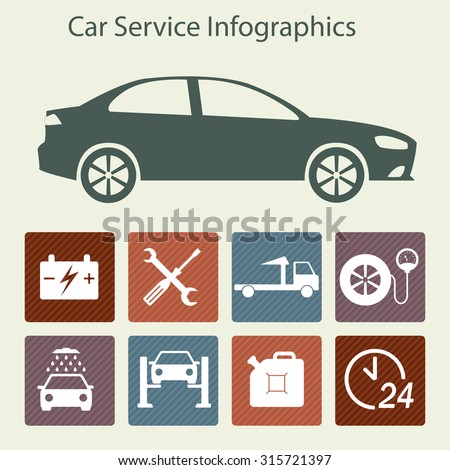Interpreting Your Vehicle'S Alert Lights: Their Real Effects
Interpreting Your Vehicle'S Alert Lights: Their Real Effects
Blog Article
Material Composed By-Sykes Kejser
When you're behind the wheel, those beautiful caution lights on your dashboard can be a bit puzzling. Do you know what they're attempting to inform you concerning your auto's wellness? Comprehending the value of these lights is crucial for your safety and security and the long life of your lorry. So, Suggested Site following time one of those lights pops up, would not you wish to understand its message properly and take the needed steps to address it?
Common Warning Lights and Interpretations
Recognize common caution lights in your auto and recognize their meanings to make certain safe driving.
One of the most common caution lights include the check engine light, which signals problems with the engine or discharges system. If this light comes on, it's critical to have your vehicle inspected immediately.
The oil stress warning light suggests low oil pressure, requiring prompt interest to prevent engine damages.
A flashing battery light may recommend a malfunctioning charging system, possibly leaving you stranded if not addressed.
The tire stress surveillance system (TPMS) light alerts you to reduced tire stress, impacting automobile security and fuel efficiency. Disregarding this could result in dangerous driving problems.
The abdominal muscle light indicates an issue with the anti-lock stopping system, endangering your ability to stop quickly in emergencies.
Last but not least, the coolant temperature level cautioning light warns of engine overheating, which can result in serious damage otherwise settled promptly.
Recognizing these usual warning lights will aid you attend to issues promptly and maintain safe driving conditions.
Value of Prompt Interest
Recognizing the typical caution lights in your vehicle is just the initial step; the importance of immediately dealing with these warnings can't be emphasized sufficient to ensure your safety and security when driving.
When a warning light illuminates on your control panel, it's your vehicle's means of connecting a prospective problem that requires interest. Overlooking these warnings can lead to a lot more serious problems down the road, jeopardizing your security and possibly costing you much more in repairs.
Trigger focus to cautioning lights can stop malfunctions and accidents. As an example, a flashing check engine light could suggest a misfire that, if left unattended, could create damages to the catalytic converter. Resolving this quickly can conserve you from a pricey repair.
Likewise, a brake system cautioning light may signal low brake liquid or used brake pads, vital elements for your safety and security when driving.
Do It Yourself Troubleshooting Tips
If you notice a warning light on your control panel, there are a few DIY troubleshooting pointers you can attempt before seeking expert help.
The very first step is to consult your auto's manual to understand what the specific warning light shows. Occasionally https://brake-service62739.blogacep.com/35126676/a-years-of-progression-in-automobile-explaining-techniques can be as straightforward as a loosened gas cap setting off the check engine light. Tightening up the gas cap might fix the trouble.
An additional common concern is a reduced battery, which can set off different cautioning lights. Checking the battery links for rust and guaranteeing they're safe and secure may deal with the problem.
If a caution light lingers, you can try resetting it by separating the cars and truck's battery for a few mins and afterwards reconnecting it. Furthermore, inspecting your vehicle's fluid degrees, such as oil, coolant, and brake liquid, can help repair alerting lights associated with these systems.
https://kameronkezto.bloggerchest.com/29852989/witness-the-exceptional-resurgence-of-a-neglected-car-highlighting-the-amazing-efficiency-of-proficient-describing-techniques-it-s-sure-to-take-your-breath-away
To conclude, understanding your cars and truck's warning lights is important for maintaining your car running efficiently and safely. By immediately addressing these informs and knowing what they indicate, you can stay clear of pricey fixings and possible breakdowns.
Remember to consult your auto's guidebook for specific details on each warning light and take action appropriately to make certain a hassle-free driving experience.
Keep notified, stay secure when traveling!
